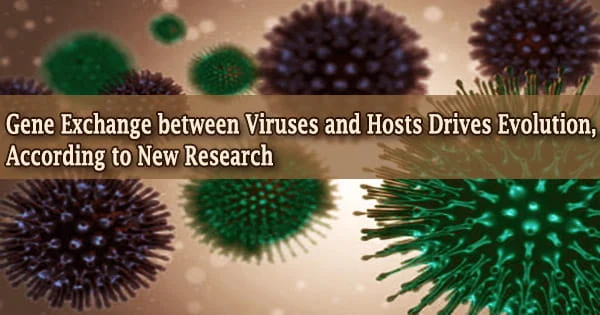The first thorough study of viral horizontal gene transfer (HGT) shows how viruses pick up genes from their hosts to fine-tune their infection processes, while hosts also co-opt valuable viral genes.
Instead of “vertical” DNA transmission from parent to offspring, HGT is the transfer of genetic material between diverse groups of organisms. HGT between bacteria and their viruses has been studied in the past, and it has been found to play a significant role in the flow of genes between bacterial species.
The current study, published in Nature Microbiology, examines virus-eukaryote interactions, which include animals, plants, fungi, protists, and most algae.
“We knew from individual examples that viral genes have played a role in the evolution of eukaryotes. Even humans have viral genes, which are important for our development and brain function,” said the study’s lead author, Dr. Nicholas Irwin, a Junior Research Fellow at Merton College, University of Oxford, and former Ph.D. student at the University of British Columbia (UBC). “We wanted to understand more broadly how HGT has affected viruses and eukaryotes from across the tree of life.”
The scientists investigated viral-eukaryotic gene transfer in the genomes of hundreds of eukaryotic species and thousands of viruses to solve this challenge. They discovered a large number of genes that had been transferred and discovered that HGT from eukaryotes to viruses was twice as common as HGT from viruses to eukaryotes.
We knew from individual examples that viral genes have played a role in the evolution of eukaryotes. Even humans have viral genes, which are important for our development and brain function. We wanted to understand more broadly how HGT has affected viruses and eukaryotes from across the tree of life.
Dr. Nicholas Irwin
“We were interested to find that certain groups of viruses, especially those that infect single-celled eukaryotes, acquire a lot of genes from their hosts,” said the study’s senior author, Dr. Patrick Keeling, a professor in the Department of Botany at UBC. “By studying the function of these genes we were able to make predictions about how these viruses affect their hosts during infection.”
Unlike viruses, eukaryotic species have maintained fewer viral genes, yet those that have survived appear to have had a significant impact on host biology throughout time.
“Many of these viral-derived genes appear to have repeatedly affected the structure and form of different organisms, from the cell walls of algae to the tissues of animals,” said Dr. Irwin. “This suggests that host-virus interactions may have played an important role in driving the diversity of life we see today.”
“These transfers not only have evolutionary consequences for both virus and host but could have important health implications,” Dr. Keeling said.
HGT allows genes to cross species boundaries, including between viruses and their hosts. If the gene proves to be beneficial, it has the potential to spread across the population and become a trait of that species. This can result in the fast emergence of new skills, rather than the more gradual changes that occur as a result of minor mutations.
Viruses like Zika and coronaviruses do not appear to participate in gene transfers, but they do influence comparable genes in their hosts through sophisticated methods.
Future research into these transferred genes could provide a fresh approach to understanding the infection processes of these and other viruses, which could be useful in treatment development.
“The past two years have clearly demonstrated the destructive potential of viruses, but we think that this work serves as an interesting reminder that viruses have also contributed to the evolution of life on Earth,” said Dr. Irwin.





